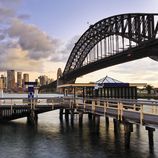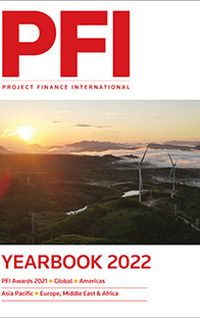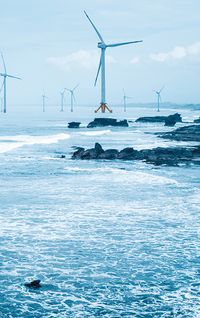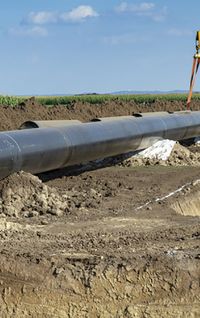Transitioning to a circular economy that retains plastic in its highest value condition is essential to reducing environmental impacts, promoting reduction, re-use, and recycling. By Andrew Butler, director, Industrials Transport and Consumer, Commonwealth Bank.
While the global focus on reducing carbon emissions has largely centred on a switch to renewable energy, if governments and industry are serious about tackling UN Climate Goals then collaboration and a broader strategic mindset is required. By way of example, more than 45% of Australia’s emissions come from the manufacture of a raft everyday things – food, clothing, cars. Despite coming off a low base, Australia has a tremendous opportunity to transform from a linear to a circular economy if collectively we examine ways to better recycle and recover resources from manufactured goods as they reach their end of life.
The global plastics economy is largely linear. Plastics are produced, used and more than half of them are disposed of with no recovery. According to the Australian federal government’s National Plastics Plan, about 84% of plastics in Australia are sent to landfill and only 13% recycled. Moreover, some 1m tonnes of plastic consumption per annum is single-use plastics, with Australia one of the world’s biggest users, generating around 60kg of single-use plastic waste per person, every year. "Closing the loop" between new and recycled packaging is critical to increasing circularity of the economy.
With the backdrop of COP26 and Australia’s somewhat frosty reception on the global stage still fresh in many people’s minds, it is therefore illuminating to see that back home three industry heavyweights have collaborated with like-minded financiers to bring to life Australia’s largest polyethylene terephthalate (PET) bottle mechanical recycling plant in Albury, New South Wales.
In July 2021, lead arranger Commonwealth Bank of Australia (CBA) along with co-financier Clean Energy Finance Corporation (CEFC) helped close the Circular Plastics Australia (PET) joint venture. The project is the brain-child of waste management company Cleanaway, packaging producer Pact and drinks company Asahi Beverages Australia (Asahi). Circular Plastics Australia will increase the amount of locally sourced and recycled PET produced in Australia by two thirds – from 30,000 tonnes currently, to >50,000 tonnes per annum.
Over a 12-month period, amid the height of Covid-19, the two financiers led complex negotiations that focused on a fundamental shift in the financing structure that was required to meet the requirements of Circular Plastics Australia and its investment-grade corporate sponsors. Dissimilar to a pure-play SPV project financing, the structure has unique features that changed the approach to risk allocation and mitigation, and has implications for the way these smaller scale but hugely significant projects can continue to be developed to create the recycling infrastructure of the future.
Project overview
In February 2020, Pact, Cleanaway and Asahi announced a collaborative development to construct a plastic pelletising facility to "close the loop" in plastics recycling and contribute to a circular economy. CPA is 40% owned by each of Cleanaway and Pact Group and 20% by Asahi Holdings Australia.
Circular Plastics Australia will process 28,000 tonnes of recycled plastic, 1bn PET bottles, into food-grade rPET bottles at an estimated project cost of A$56m at a greenfield facility located in Albury, NSW. The project is also supported by US$4.8m in grant funding under the Commonwealth Government’s Recycling Modernisation Fund and NSW State Government’s Recycle More, Waste Less initiative designed to support industry to increase circularity of supply chains.
The plant will draw on the expertise of each member of the joint venture. Cleanaway will provide the plastic to be recycled through its collection and sorting network, Pact will provide technical and packaging expertise, while Asahi Beverages and Pact will buy the recycled plastic from the facility to use in their packaging with contracted minimum offtake volumes.
The site is strategically in close proximity to Asahi’s existing bottling plant, while also future proofing for a potential Victorian container deposit scheme (CDS) that may complement the existing scheme in NSW. The strategic location within the Nexus Industrial Project further demonstrates suitability, as CPA is able to service 75% of the Australian population within 24 hours.
![]()
Mechanical recycling
Mechanical recycling is the processing of plastic waste into secondary raw material without significantly changing the chemical structure of the material. In principle, all types of thermoplastics can be mechanically recycled with little or no quality impairment and it represents "best practice recycling", almost the sole form of recycling in Europe. In contrast, chemical recycling refers to processes that turn plastic polymers back into individual monomers, allowing post-consumer plastic materials to be re-used.
The initial input is PET plastic bottles, which have been baled and collected from waste collection sites. Bales of PET bottles are placed onto an infeed conveyor to begin the recycling process. The initial part of the process involves state of the art colour and near infrared bottle sorting technology targeting natural coloured PET required for the manufacture of food grade rPET resin . A de-labelling machine assists in removing the existing labels from the bottles. Hoppers are placed along the process flow line in order to collect waste and other non-natural PET byproducts that are consolidated separately and send to other recycling plants within Pact Group for further recycling.
Once processed, the re-cycled pellets are used in the bottle manufacturing process by Asahi and Pact.
Financial structuring
* Too small for project finance – Stand-alone, non corporate recourse funding of A$33m was sought, and ultimately jointly provided by CBA and CEFC. As a A$56m greenfield development, Circular Plastics Australia clearly doesn’t fit the bill of typical project finance and is rather modest in size compared with the ordinary long-term financing of infrastructure and industrial projects that gets PF bankers excited. Nevertheless, the nature of the project as critical infrastructure for the circular economy of the future should not be understated, and was appreciated early on by CBA and CEFC.
CPA is the sole borrower and an operating entity. There are no other asset-owning related parties. Financier security will also include mortgages over freehold and a general security deed granting security over all the assets of the borrower, including non-lender agreements consisting of feedstock, offtake, building and equipment supply agreements. Financiers also benefited from tripartite arrangements with the builder, equipment suppliers, offtakers, and feedstock provider (including assignment of insurance and performance guarantees), cost-to-complete drawdown protocols, and ongoing project oversight by CBA’s equipment management and advisory (EMA) and structured asset finance (SAF) executions teams in conjunction with the JV and the key contractors.
The first A$23.7m of the project will be funded by equity and shareholder loans prior to the debt facility being drawn, by which time the building construction component of the project will be nearing completion. The A$33m facility limit, if fully drawn, equates to 60% of the A$56m total project cost excluding contingency and NWC.
* Sponsors and green credentials – The facility is a large investment in reducing Australia’s reliance on virgin PET and is supported not only by the three sponsors but by the Commonwealth and NSW state government in Australia. Financiers drew significant comfort from their existing relationships with the investment-grade corporate sponsors and note that the project had a very high profile domestically as well as being clearly aligned with each sponsor’s respective ESG (environmental, social and governance) strategies. Beyond the scope of the plants green output, CPA will also utilise and recycle rain water, and will be partly powered by solar energy.
* CBA structuring expertise – Time spent by the sponsors and a unique understanding of the project by the financiers helped provide comfort on the myriad of risks that external third-party project due diligence ordinarily assists in mitigating.
In essence, the operations and maintenance (O&M) tasks will be managed in-house rather than via a third-party O&M contract. There is also no overarching project agreement. Operations will be overseen by Pact, leveraging its experience as Australia’s plastics recycler. Although independent assessment of the complexity of O&M and asset lifecycle operations was not made available to the financiers – CPA utilised recycling plant specialised Nextek as an external consultant but financiers were not privy to these exchanges – Pact currently operates similar plant manufacturing with products manufactured from both virgin PET and recycled PET across Australia and New Zealand and was considered to have the requisite expertise.
Advisers
Advisers on the financing were Ashurst as legal adviser to CBA and CEFC, while G&T provided counsel to Circular Plastics Australia, Cleanaway, Pact and Asahi. Nextek was the recycling plant specialist completing specification and the OEM selection process for Circular Plastics, while TM Insight Operations (now TMX) will provide oversight of the build, including development approval and planning. Babbage Consulting will undertake OEM design, installation and integration and all ancillary equipment responsibilities. Joss Construction, a family-owned business based in Albury and employing 1,600 individuals, is the builder contracted to construct the facility.
![]()
To see the digital version of this report, please click here
To purchase printed copies or a PDF of this report, please email gloria.balbastro@lseg.com

















